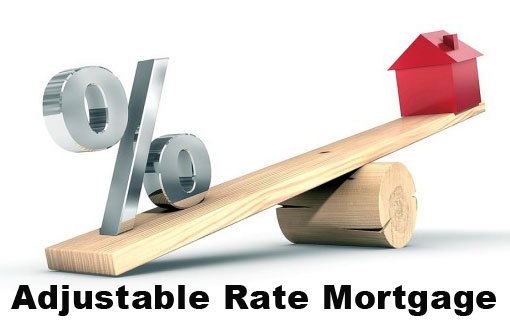Types of Adjustable-Rate Mortgages

Hybrid Adjustable-Rate Mortgages
Hybrid ARMs often are advertised as 3/1 or 5/1 ARMs—you might also see ads for 7/1 or 10/1 ARMs. These loans are a mix— or a hybrid—of a fixed-rate period and an adjustable-rate period. The interest rate is fixed for the first few years of these loans—for example, for five years in a 5/1 ARM. After that, the rate may adjust annually (the 1 in the 5/1 example), until the loan is paid off. In the case of 3/1, 5/1, 7/1 or 10/1 ARMs:
- The first number tells you how long the fixed interest-rate period will be.
- The second number tells you how often the rate will adjust after the initial period.
You may also see ads for 2/28 or 3/27 ARMs—the first number tells you how many years the fixed interest-rate period will be, and the second number tells you the number of years the rates on the loan will be adjustable. Some 2/28 and 3/27 mortgages adjust every six months, not annually.
Interest-only Adjustable-Rate Mortgages
An interest-only (I-O) ARM payment plan allows you to pay only the interest for a specified number of years, typically for three to 10 years. This allows you to have smaller monthly payments for a period. After that, your monthly payment will increase—even if interest rates stay the same—because you must start paying back the principal as well as the interest each month. For some I-O loans, the interest rate adjusts during the I-O period as well.
For example, if you take out a 30-year mortgage loan with a five-year I-O payment period, you can pay only interest for five years and then you must pay both the principal and interest over the next 25 years. Because you begin to pay back the principal, your payments increase after year five, even if the rate stays the same. Keep in mind that the longer the I-O period, the higher your monthly payments will be after the I-O period ends.
Payment-option Adjustable-Rate Mortgages
A payment-option ARM is an adjustable-rate mortgage that allows you to choose among several payment options each month. The options typically include the following:
- A traditional payment of principal and interest, which reduces the amount you owe on your mortgage. These payments are based on a set loan term, such as a 15-, 30-, or 40- year payment schedule.
- An interest-only payment, which pays the interest but does not reduce the amount you owe on your mortgage as you make your payments.
- A minimum (or limited) payment, which may be less than the amount of interest due that month and may not reduce the amount you owe on your mortgage. If you choose this option, the amount of any interest you do not pay will be added to the principal of the loan, increasing the amount you owe and your future monthly payments, and increasing the amount of interest you will pay over the life of the loan. In addition, if you pay only the minimum payment in the last few years of the loan, you may owe a larger payment at the end of the loan term, called a balloon payment.
In addition to these options, in most cases you can choose to pay any amount over the required minimum payment.
The interest rate on a payment-option ARM is typically very low for the first few months (for example, 2 percent for the first one to three months). After that, the interest rate usually rises to a rate closer to that of other mortgage loans. Your payments during the first year are based on the initial low rate, meaning that if you only make the minimum payment each month, it will not reduce the amount you owe and it may not cover the interest due. The unpaid interest is added to the amount you owe on the mortgage, and your loan balance increases. This is called negative amortization. This means that even after making many payments, you could owe more than you did at the beginning of the loan. See a further caution about negative amortization in the “Consumer Cautions” section below. Also, as interest rates go up, your payments are likely to go up.
Payment-option ARMs have a built-in recalculation period, usually every five years. At this point, your payment will be recalculated (or “recast”) based on the remaining term of the loan. If you have a 30-year loan and you are at the end of year five, your payment will be recalculated for the remaining 25 years. If your loan balance has increased because you have made only minimum payments, or if interest rates have risen faster than your payments, your payments will increase each time your loan is recast. At each recast, your new minimum payment will be a fully amortizing payment and any payment cap will not apply. This means that your monthly payment can increase a lot at each recast.
Lenders may recalculate your loan payments before the recast period if the amount of principal you owe grows beyond a set limit, say 110 percent or 125 percent of your original mortgage amount. For example, suppose you made only minimum payments on your $200,000 mortgage and had any unpaid interest added to your balance. If the balance grew to $250,000 (125 percent of $200,000), your lender would recalculate your payments so that you would pay off the loan over the remaining term. It is likely that your payments would go up substantially.
See more at..https://mediaslive.blogspot.com/2018/10/types-of-adjustable-rate-mortgages.html?showComment=1541851381515